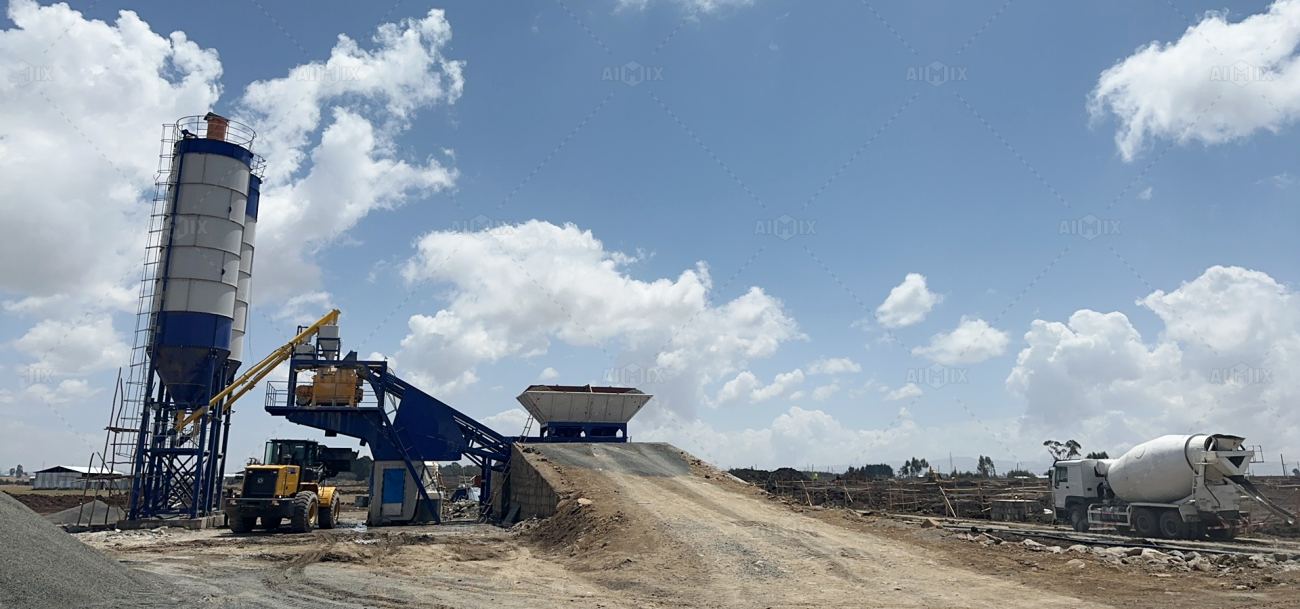As the construction industry continues to evolve, driven by speed, mobility, and smart technology, mobile batching plants have become a crucial solution for projects requiring on-site concrete production. From remote infrastructure development to temporary urban projects, these plants offer unmatched flexibility and faster execution times. However, as demand grows, so do the concerns about pricing. Balancing cutting-edge innovation with cost-effectiveness is now the central challenge. This article explores the future of mobile batching plant price, examining how technological innovation and market affordability are shaping purchasing decisions.

Why Mobile Batching Plants Matter
Mobile concrete batching plants are designed for ease of transport, fast setup, and flexible operation. Unlike stationary concrete plants, they can be moved from one site to another, reducing concrete transport costs and minimizing delays. They are typically equipped with modular components including aggregate batching systems, cement silos, water tanks, control systems, and mixers—all mounted on a trailer or skid.
Their popularity is rising across fast-developing regions such as Southeast Asia, Latin America, Africa, and the Middle East. Government infrastructure investment, urban expansion, and the growth of private construction firms are fueling this shift toward mobile batching solutions.
Key Drivers of Mobile Batching Plant Prices
The price of a mobile batching plant is influenced by a mix of core factors:
Production capacity (e.g., 25m³/h, 35m³/h, 60m³/h, etc.)
Automation level (manual, semi-automatic, or fully automatic)
Component quality and brand reputation
Technology integration (IoT, telematics, PLC control, etc.)
Configuration and customization
Shipping and installation location
Global supply chain disruptions and material costs
In 2025, mobile batching plant price typically ranges between USD 30,000 to USD 150,000 depending on specifications. However, future trends show that prices are not just dictated by hardware anymore—software and smart integration are beginning to play an increasingly important role.

The Innovation Push: What’s Adding to the Price?
Automation and Control Systems
The integration of fully automatic PLC-based control systems increases initial investment but improves operational accuracy, consistency, and labor efficiency. Modern control panels include touchscreen interfaces, recipe storage, and remote diagnostic capabilities.
IoT and Telematics Integration
Plants equipped with IoT sensors allow real-time tracking of production data, material levels, maintenance needs, and energy usage. These smart features enhance decision-making and reduce long-term operational costs but add to upfront pricing.
Energy Efficiency Enhancements
Newer models feature energy-saving motors, eco-friendly mixers, and optimized batching cycles. While sustainable design is a major selling point, it also contributes to higher initial costs due to premium materials and R&D investment.
Modular and Compact Design
Innovations in mobility, such as foldable components, skid-mounted systems, and self-erecting features, simplify setup and transportation. These engineering improvements increase convenience but may raise production costs.
Higher Precision Weighing and Mixing Systems
To meet demanding quality standards, mobile plants now often include advanced load cells and high-efficiency twin-shaft or planetary mixers. These upgrades ensure better concrete consistency but come at a price.
Affordability Concerns: What’s Keeping Prices in Check?
Despite all the innovation, manufacturers are under pressure to offer more affordable models due to growing competition and varying customer needs across different regions.
Rising Competition in Emerging Markets
Manufacturers from China, Turkey, India, and Southeast Asia are increasingly offering budget-friendly mobile batching plants, prompting larger brands to diversify product lines with cost-effective options.
Standardization of Components
As certain batching components become standardized, production costs fall. Bulk manufacturing and design repetition also help reduce unit prices.
Simplified Designs for Budget Buyers
Some buyers don’t require all the latest technology. Suppliers now offer stripped-down versions of mobile plants with manual controls, basic mixers, and smaller capacities to meet demand in low-budget markets.
Government Incentives and Tax Subsidies
In countries promoting infrastructure development, incentives for localized manufacturing or green equipment adoption can lower acquisition costs for mobile batching plants.

Striking the Balance: Innovation vs. Affordability
For suppliers and buyers alike, the key to success lies in customization and value-based configuration. Instead of aiming for the most advanced or the cheapest model, concrete batching mixing plant selection is now driven by:
Application needs (short-term project vs. long-term use)
Production targets (volume, frequency)
Labor skill level (automation needs)
Project location and logistics
Quality and compliance requirements
Buyers with long-term or high-volume requirements may find it worth investing in automated and IoT-equipped models, as the operating savings often outweigh the initial cost. On the other hand, contractors running short-term or rural projects may prioritize affordability, portability, and simplicity over tech features.
Market Forecast: What to Expect in 2025 and Beyond
Price Stabilization: As supply chains recover from global disruptions, mobile batching plant prices are expected to stabilize or slightly decline for standard models.
Wider Product Ranges: Manufacturers will expand product lines to include both high-end smart plants and affordable entry-level versions.
Increased After-Sales Services: To improve cost-effectiveness, suppliers are offering longer warranties, remote support, and maintenance packages.
Green Tech Incentives: With growing environmental regulations, mobile batching plants with eco-friendly features may receive subsidies or tax benefits in various countries.
Conclusion
The future of mobile batching plant price sits at the intersection of innovation and affordability. Technological upgrades are transforming mobile concrete production into a smarter, more efficient operation, but they also elevate upfront investment. At the same time, competitive market pressures and diverse buyer needs are ensuring that more cost-effective options remain available.
The key for decision-makers is to evaluate total cost of ownership (TCO) instead of just purchase price. This includes savings from labor reduction, energy efficiency, better quality control, and longer equipment lifespan. By striking the right balance between tech adoption and budget, buyers can ensure they’re investing in a mobile batching plant that not only fits their current needs but also supports future growth.